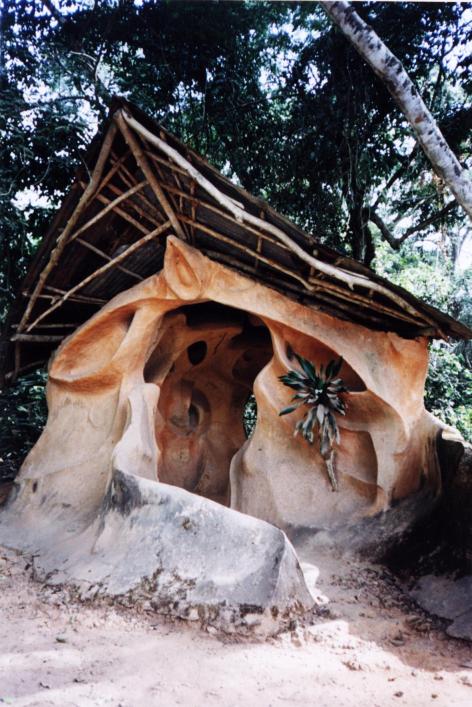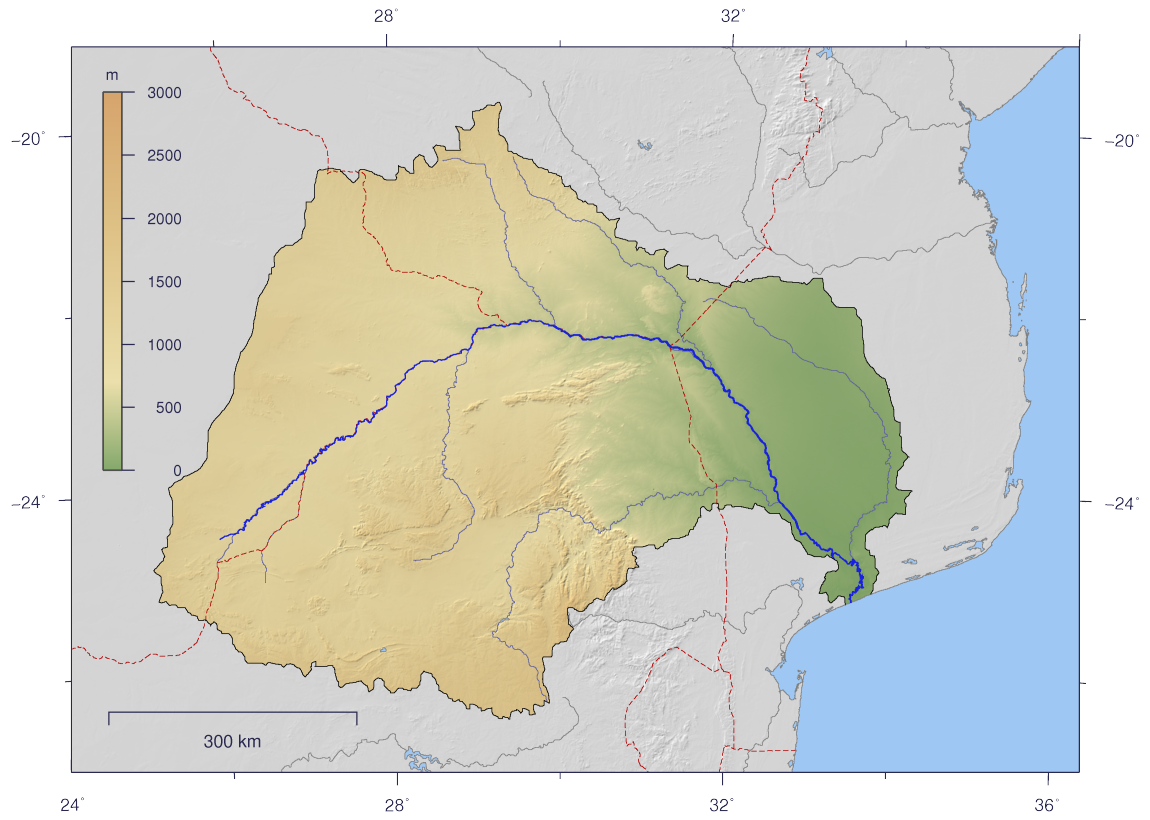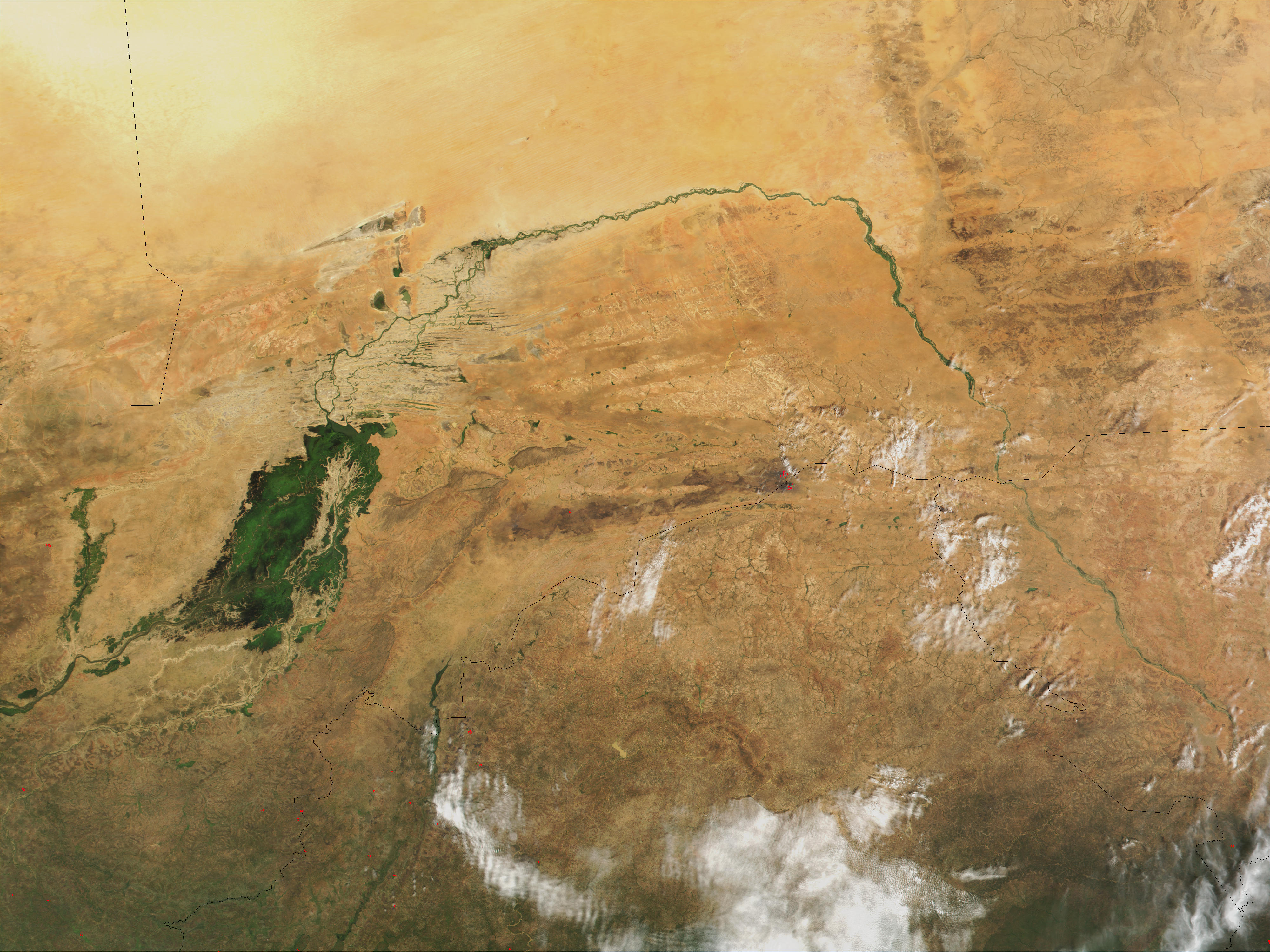|
List Of River Name Etymologies
This article lists the various etymologies (origins) of the names of rivers around the world. Africa *Apies River, Apies: from Afrikaans language, Afrikaans meaning "little apes". *Berg River, Berg: from Afrikaans language, Afrikaans meaning "mountain". *Blood River, Blood: from the Battle of Blood River, where 600 voortrekkers fought off 20,000 attacking Zulu troops. No voortrekkers were killed, but the dead Zulus (3,000 died) stained the nearby river with blood, and so the name stayed. *Breede River, Breede: from Afrikaans language, Afrikaans meaning "wide". *Escravos River, Escravos: from Portuguese language, Portuguese meaning "slaves". *Forcados River, Forcados: from Portuguese language, Portuguese meaning "forked". *Gamtoos River, Gamtoos: probably derived from a Khoikhoi clan whose name was given by early Dutch people, Dutch settlers as "Gamtousch". *Komati River, Komati: from Swati language, siSwati meaning "cow". *Liesbeek River, Liesbeek: named after a small river in th ... [...More Info...] [...Related Items...] OR: [Wikipedia] [Google] [Baidu] |
Apies River
__NOTOC__ The Apies River is a river that flows through the city of Pretoria, South Africa. Its source is located just south of the city (south of Erasmus Park) and it flows northward until it drains into the Pienaars River. The word "Apies" is Afrikaans for small monkeys and is a reference to the historical abundance of vervet monkeys on the Apies River banks. Nguni-speaking people, who became known as the Ndebele, are thought to have been the first people to recognise the suitability of the Apies River valley as a place to put down roots. The Ndebele encountered indigenous nomadic Khoisan people, which they called abaTshwa (the People who are Ignored), occupying the area. The Ndebele named the river 'Tshwane' which means 'Place of the abaTshwa'. It is also argued that they named the river after one of their chiefs "Tshwane" who is reputedly buried under the Wonderboom. It is also proposed that 'Tshwane' is a corruption of 'tshwene' which is the Sotho and Tswana word for mo ... [...More Info...] [...Related Items...] OR: [Wikipedia] [Google] [Baidu] |
Modder River
The Modder River is a river in South Africa. It is a tributary of the Riet River that forms part of the border between the Northern Cape and the Free State provinces. The river's banks were the scenes of heavy fighting in the beginning of the Second Boer War at the Battle of Modder River. There is an inhabited farming place named 'Modder River' just north of the confluence between this river and the Riet.''Padlangs deur Suid-Afrika.'' 2010 The Modder River is used extensively for irrigation, including the Krugersdrift Dam near Bloemfontein. See also * Battle of Modder River * List of rivers of South Africa This is a list of rivers in South Africa. It is quite common to find the Afrikaans word ''-rivier'' as part of the name. Another common suffix is "''-kamma''", from the Khoisan term for "river" Meiring, Barbara"South African Toponymic Guidelin ... References External links Battle of Modder River, 28 November 1899 Vaal River Modder River Karoo Rivers of t ... [...More Info...] [...Related Items...] OR: [Wikipedia] [Google] [Baidu] |
Oshun
Oshun (also Ọṣun, Ochún, and Oxúm) is the Yoruba orisha associated with love, sexuality, fertility, femininity, water, destiny, divination, purity, and beauty, and the Osun River, and of wealth and prosperity in the Yoruba religion. She is considered the most popular and venerated of the 401 orishas. In the mythology, Oshun was once the queen consort to King Shango of Oyo, and deified following her death, honored at the Osun-Osogbo Festival, a two-week-long annual festival that usually takes place in August, at the Oṣun-Osogbo Sacred Grove in Osogbo. A violín is a type of musical ceremony in Regla de Ocha performed for Osún. It includes both European classical music and Cuban popular music. Mythology According to the Ifa Literary Corpus, Oshun was the only female Irunmole (primordial spirit) sent to assist Shango to create the world by Olodumare, the Supreme God. The other spirits sent ignored Oshun, who went to Shango for guidance. One version of the stor ... [...More Info...] [...Related Items...] OR: [Wikipedia] [Google] [Baidu] |
Yoruba Language
Yoruba (, ; Yor. ) is a Niger–Congo languages, Niger-Congo language that is spoken in West Africa, primarily in South West (Nigeria), Southwestern and Middle Belt, Central Nigeria, Benin, and parts of Togo. It is spoken by the Yoruba people. Yoruba speakers number roughly 50 million, including around 2 million second-language or L2 speakers. As a pluricentric language, it is primarily spoken in a dialectal area spanning Nigeria, Benin, and Togo with smaller migrated communities in Côte d'Ivoire, Sierra Leone and The Gambia. Yoruba vocabulary is also used in African diaspora religions such as the Afro-Brazilian religion of Candomblé, the Caribbean religion of Santería in the form of the liturgical Lucumí language, and various Afro-American religions of North America. Most modern practitioners of these religions in the Americas are not fluent in the Yoruba language, yet they still use Yoruba words and phrases for songs or chants—rooted in cultural traditions. For such pra ... [...More Info...] [...Related Items...] OR: [Wikipedia] [Google] [Baidu] |
Omi Osun
Omi-Ọṣun, literally meaning "Osun , Ọṣun Water, waters", is the northernmost source tributary of the Osun River , Ọṣun River in southwestern Nigeria. The Omi-Ọṣun tributary rises from the eastern sector of the Yoruba hills and flows westwards into the Òyì River which subsequently flows southward along two deep gorges within the Oke-Ila quartzite ridges, (adjacent to Oke-Ila , Oke-Ila Orangun), before its confluence with other rivers to form the main Osun river, Osun. Ruins of an ancient settlement called Omi-Osun ruins, Omi-Ọṣun also exists along the Omi-Ọṣun river. This settlement was a former location of the Oke Ila, Oke-Ila Orangun Monarchy, kingdom during the migrations of earlier centuries following the departure of the Oke-Ila and Ila people, Ila factions from their ancient kingdom and mother city of Ila-Yara. The name Omi-Ọṣun is attributed to the realization that the tributary feeds the Ọṣun River, as ... [...More Info...] [...Related Items...] OR: [Wikipedia] [Google] [Baidu] |
Olifants River (Limpopo)
The Olifants River, Lepelle, iBhalule or Obalule (; ) is a river in South Africa and Mozambique, a tributary of the Limpopo River. It falls into the Drainage Area B of the Drainage basins of South Africa. The historical area of the Pedi people, Sekhukhuneland, is located between the Olifants River and one of its largest tributaries, the Steelpoort River. Course The Olifants River has its origin between Breyten and Bethal, Mpumalanga Province. It flows north towards Limpopo Province through Witbank Dam and then the Loskop Dam and is forced east by the Transvaal Drakensberg, cutting through at the Abel Erasmus Pass and then flowing east further across the Lowveld to join with the Letaba River. It crosses into Gaza Province, Mozambique, after cutting through the Lebombo Mountains by way of the Olifants Gorge, becoming the ''Rio dos Elefantes'', and finally joining the Limpopo River after 40 km before it enters the Indian Ocean at Xai-Xai north of Maputo M ... [...More Info...] [...Related Items...] OR: [Wikipedia] [Google] [Baidu] |
Zulu Language
Zulu ( ), or isiZulu as an endonym, is a Southern Bantu languages, Southern Bantu language of the Nguni languages, Nguni branch spoken in, and indigenous to, Southern Africa. Nguni dialects are regional or social varieties of the Nguni language, distinguished by vocabulary, pronunciation, grammar, and other linguistic features. So, Zulu is one of the Nguni dialects which is spoken by the Zulu people, with about 13.56 million native speakers, who primarily inhabit the province of KwaZulu-Natal in South Africa. The word "KwaZulu-Natal" translates into English as "Home of the Zulu Nation is Natal". Zulu is the most widely spoken home language in South Africa (24% of the population), and it is understood by over 50% of its population. It became one of languages of South Africa, South Africa's 12 official languages in 1994. According to Ethnologue, it is the second-most widely spoken of the Bantu languages, after Swahili language, Swahili. Like many other Bantu languages, it is written ... [...More Info...] [...Related Items...] OR: [Wikipedia] [Google] [Baidu] |
Ohlanga River
The Ohlanga River is a river in KwaZulu-Natal, South Africa, which empties into the Indian Ocean just north of uMhlanga, north of Durban.Tourism KwaZulu-NatalAbout Durban retrieved September 2006 The river has extensive reed beds in the estuary at its mouth,South African BirdingUmhlanga Conservancy, retrieved September 2006 which is only 7 km southwest from the mouth of the uMdloti River. Presently, this river is part of the Mvoti to Umzimkulu Water Management Area. Umhlanga conservancy At the river's mouth, a lagoon is surrounded by the Umhlanga Conservancy. This area includes a Umhlanga Lagoon Nature Reserve,KZN WildlifUmhlanga Lagoon, retrieved September 2006 and a waste treatment works which is publicly accessible. This area contains bushbuck, blue and grey duiker, and numerous birds, including the southernmost occurrence of crested guineafowl. See also * List of rivers of South Africa * List of estuaries of South Africa This is a list of estuaries in South A ... [...More Info...] [...Related Items...] OR: [Wikipedia] [Google] [Baidu] |
Nossob River
The Nossob River (also Nosob or Nossop; ''ǂnuse ǃab'', Khoikhoi for black river) is a dry river bed in eastern Namibia and the Kalahari region of South Africa and Botswana. It covers a distance of 740 km and last flooded in 1989. The river also lends its name to Nossob camp () in the Kgalagadi Transfrontier Park. Course The Nossob has its origin in two main Tributary, tributaries, the Swart-Nossob and Wit-Nossob, meaning black and white respectively. Both tributaries have their origins in the eastern slopes of the Otjihavera mountain range, east of Windhoek. Their sources are at 1,800 m and over 2,000 m above sea level respectively. The two river beds have their Confluence (geography), confluence some 80 km south of Gobabis, which is situated on the bank of the Swart-Nossob. From this confluence the river course passes the settlements of Leonardville, Namibia, Leonardville and Aranos to arrive at Union's End, South Africa. From Union's End the river bed, f ... [...More Info...] [...Related Items...] OR: [Wikipedia] [Google] [Baidu] |
Nile
The Nile (also known as the Nile River or River Nile) is a major north-flowing river in northeastern Africa. It flows into the Mediterranean Sea. The Nile is the longest river in Africa. It has historically been considered the List of river systems by length, longest river in the world, though this has been contested by research suggesting that the Amazon River is slightly longer.Amazon Longer Than Nile River, Scientists Say Of the world's major rivers, the Nile has one of the lowest average annual flow rates. About long, its drainage basin covers eleven countries: the Democratic Republic of the Congo, Tanzania, Burundi, Rwanda, Uganda, Kenya, Ethiopia, Eritrea, South Sudan, Sudan, and Egypt. In pa ... [...More Info...] [...Related Items...] OR: [Wikipedia] [Google] [Baidu] |
Tuareg Languages
Tuareg (), also known as ''Tamasheq'' (), ''Tamajaq'' or ''Tamahaq'' (Tifinagh: ), is a group of closely related Berber languages, Berber Linguistic variety, varieties. They are spoken by the Tuareg people, Tuareg Berbers in large parts of Mali, Niger, Algeria, Libya, and Burkina Faso, with a few speakers, the ''Kinnin'', in Chad. Description The Tuareg varieties, on account of their low internal diversity and high Mutual intelligibility, mutual intercomprehensibility, are commonly regarded as a single language by linguists (as for instance by Karl-Gottfried Prasse). They are distinguished mainly by a few sound shifts (notably affecting the pronunciation of original ''z'' and ''h''). The Tuareg varieties are unusually Conservative and innovative language, conservative in some respects; they retain two short vowels where Northern Berber languages have one or none, and have a much lower proportion of Arabic language, Arabic loanwords than most Berber languages. The Tuareg languages ... [...More Info...] [...Related Items...] OR: [Wikipedia] [Google] [Baidu] |
Niger River
The Niger River ( ; ) is the main river of West Africa, extending about . Its drainage basin is in area. Its source is in the Guinea Highlands in south-eastern Guinea near the Sierra Leone border. It runs in a crescent shape through Mali, Niger, on the border with Benin and then through Nigeria, discharging through a massive River delta, delta, known as the Niger Delta, into the Gulf of Guinea in the Atlantic Ocean. The Niger is the third-longest river in Africa, exceeded by the Nile and the Congo River. Its main tributary is the Benue River. Etymology The Niger has different names in the different languages of the region: * Fula language, Fula: ''Maayo Jaaliba'' * Manding languages, Manding: ''Jeliba'' or ''Joliba'' "great river" * Tuareg languages, Tuareg: ''Eġərəw n-Igərǝwăn'' "river of rivers" * Songhay languages, Songhay: ''Isa'' "the river" * Zarma language, Zarma: ''Isa Beeri'' "great river" * Hausa language, Hausa: ''Kwara'' *Nupe language, Nupe: ''Èdù'' ... [...More Info...] [...Related Items...] OR: [Wikipedia] [Google] [Baidu] |







